Exploring a Comprehensive Guide the Top Solar Generators for Off-Grid Living Review
- December 6, 2023
- 0 comment
In my quest for sustainable living and the freedom of off-grid living, I’ve come to appreciate the importance of reliable and efficient solar generators. These compact powerhouses are the backbone of any off-grid setup, providing energy to run our appliances, charge our devices, and keep the lights on in remote locations. But with a plethora of options available in the market, choosing the right solar generator can be a daunting task. That’s why I’ve decided to share my insights and experiences with the top solar generators for off-grid living. This comprehensive guide will help you make an informed decision, just as I did.
As someone who has been living off the grid for several years now, I understand the significance of a dependable energy source. I’ve thoroughly tested and evaluated various solar generators in real-world scenarios to help you choose the one that suits your specific needs.

If you’re exploring an off-grid way of life or seeking to enhance your existing arrangement, a solar generator stands out as an ideal option for energizing your home.
Within this guide, we’ll delve into the advantages of solar generators, outline the selection process for finding the right fit for your off-grid requirements, and address common queries. To begin, let’s gain a clearer insight into the concept of off-grid living, the role of solar generators, and how they harmonize with one another.
Exploring Off-Grid Lifestyle and the Benefits of Solar Generators
For many individuals, the concept of living off the grid represents an idyllic lifestyle. It embodies a break from the urban rush, an embrace of nature’s tranquility, and the autonomy to cultivate resources independently. This way of life signifies self-sufficiency, autonomy, and a commitment to reducing one’s ecological impact. Yet, it’s not without its hurdles. Among these challenges, securing a reliable power supply stands out as paramount.
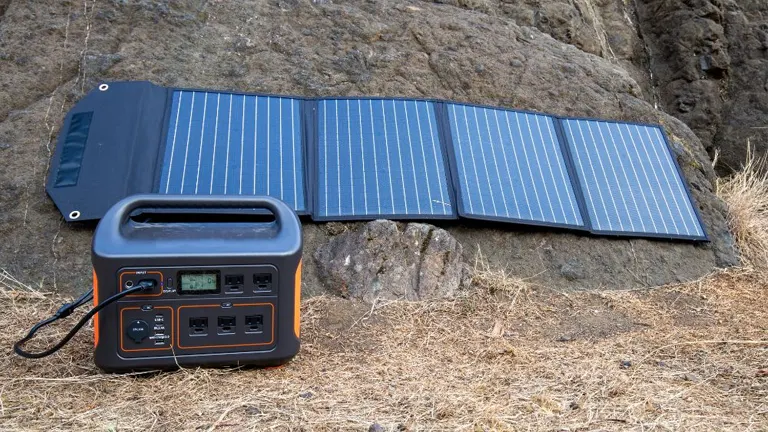
Off-grid living extends beyond mere disconnection from public utilities; it necessitates a consistent and dependable power source to cater to daily necessities. This is where solar generators step in as a practical and sustainable resolution.
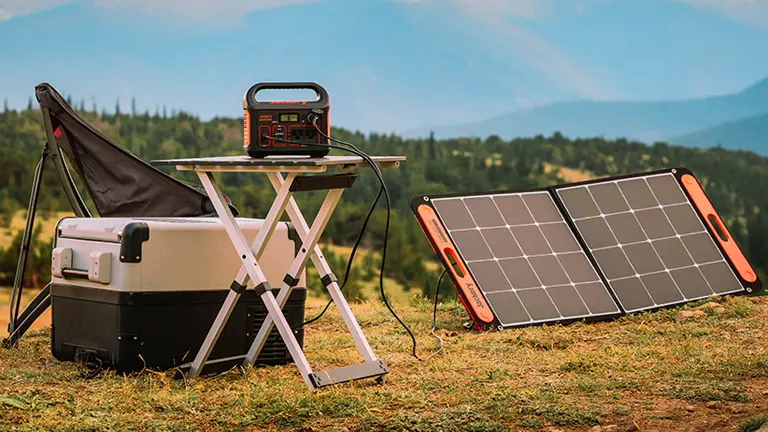
Solar generators amalgamate solar panels, battery storage, and an inverter, functioning in harmony to transform sunlight into usable electricity. They represent a clean, renewable, and self-sustaining power alternative, transforming the obstacle of off-grid power supply into an opportunity for sustainable and environmentally conscious living.
Advantages of Solar Generators for Off-Grid Living
You might be pondering, why opt for a solar generator? What sets it apart as a game-changer for off-grid living? Let’s delve into the remarkable benefits it can offer you.
- Eco-Friendly Solution: To begin, solar generators are a blessing for the environment. They harness the power of the sun, a clean and renewable energy source. Unlike conventional fuel-powered generators, they don’t emit harmful emissions or contribute to noise pollution. This allows you to maintain the pristine serenity of your surroundings while making a positive impact on the planet.
- Energy Autonomy: With a solar generator, you take the reins of your power supply. No longer are you subject to the whims of power outages or fluctuating utility rates. You produce your own electricity from sunlight and store it for use day or night. This self-sufficiency aligns perfectly with the core principles of off-grid living, and solar generators transform it into a reality.
- Long-Term Cost Savings: It’s true that the initial investment in a solar generator may appear substantial. However, consider this perspective: once it’s in place, it’s akin to having a free source of power for years to come. Say goodbye to fuel expenses, utility bills, and exorbitant maintenance costs. Over time, the savings can be substantial.
- Scalability: One of the wonderful aspects of solar generators is their scalability. As your energy requirements grow, you can expand your solar system by incorporating additional panels or batteries. It’s akin to constructing your power station, one building block at a time.
- Emergency Readiness: In an off-grid scenario, preparedness for emergencies is paramount. Solar generators excel in this regard. Even in situations where obtaining fuel may be challenging, you can still rely on the sun to power your essentials.
The advantages of solar generators are abundant and compelling, rendering them an exceptional choice for individuals desiring an off-grid lifestyle without compromising on modern conveniences.
Selecting the Ideal Solar Generator for Off-Grid Living
Opting for the most suitable solar generator for your off-grid residence may seem like a challenging endeavor. The market offers a plethora of choices, making it imperative to pinpoint one that aligns with your individual requirements. By focusing on a few essential factors, you’ll discover the perfect match for your needs.
- Power Output: The power output of a solar generator determines its ability to supply electricity. It’s crucial to examine both the continuous and surge power ratings. Continuous power indicates the amount of wattage the generator can consistently supply, while surge power refers to its capacity to handle temporary spikes in power demand, such as when starting appliances or tools. Assessing these ratings ensures the generator can handle your devices’ power requirements without overloading or underperforming.
- Battery Capacity: The battery capacity of a solar generator dictates how much energy it can store for later use. A larger battery capacity is essential, especially during periods of low sunlight, such as cloudy days or at night. Evaluating the battery’s capacity and understanding its runtime when powering essential devices helps ensure a continuous power supply when solar energy isn’t readily available.
- Portability: Off-grid living often involves mobility. Therefore, the portability of the solar generator is crucial. Consider the weight, size, and ease of transport for each generator. A compact, lightweight design with handles or wheels can significantly impact its usability, especially if you’ll be moving it frequently or using it for outdoor activities.
- Charging Options: The ability to recharge the solar generator using various methods is vital. Assess the charging options provided by the generator, including solar panels, wall outlets, or car chargers. Compatibility with different charging sources ensures flexibility in recharging, enabling you to power up the generator regardless of the availability of sunlight or other power sources.
- Additional Features: Some solar generators offer supplementary features that enhance their functionality. These may include multiple AC outlets, USB ports, or even smartphone apps for monitoring and control. Such features not only add convenience but also expand the generator’s versatility, allowing you to power and charge various devices simultaneously. Evaluating these additional features can significantly impact the overall user experience and efficiency of the generator.
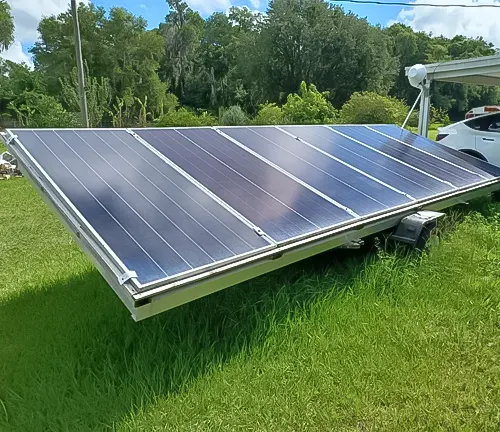
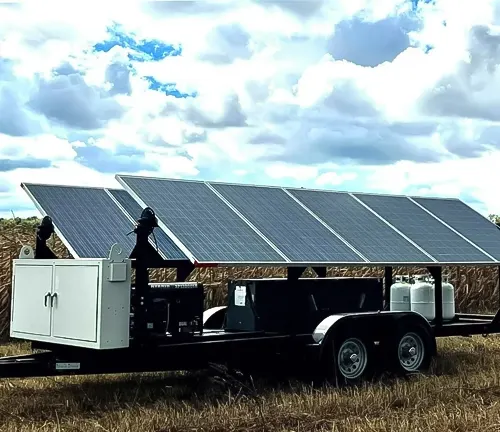
Let’s delve into a standout model that excels in meeting these criteria – the Anker Solar Generator 767. By leveraging our unique InfiniPower™ technology alongside a rugged, impact-resistant build and long-lasting LiFePO4 batteries, it guarantees a decade of consistent and durable energy supply. Moreover, its IP67 water resistance shields it from nature’s harshest elements, ensuring resilience during your most adventurous outings. Boasting a maximum pure sine wave power of 2400W, this model enables the simultaneous powering of 12 devices, featuring an array of ports including 4 AC outlets, 3 USB-C ports, 2 USB-A ports, 1 RV port, and 2 car outlets. The accompanying 531 Solar Panel with adjustable kickstands allows for optimization of angles, catering to various conditions for peak efficiency.
When it comes to portable solar generator solutions, Anker stands out, backed by our industry-leading 5 Year Full-Device Warranty. For all your energy needs on the go, look no further than Anker.
Anker SOLIX F2000 Portable Solar Generator
Rating: ★★★★★
Our portable power stations are offered on a first-come, first-served basis, providing access to cutting-edge technology and reliability. Featuring Anker’s exclusive InfiniPower™ Technology, these units boast an exceptional 10-year lifespan, ensuring lasting and consistent performance. Thanks to the innovative HyperFlash Technology, recharging the Portable Power Station from 0 to 80% takes a mere 1.4 hours, ensuring quick and efficient energy restoration. With the capability to power up to 12 devices simultaneously, these portable stations deliver convenience and versatility, catering to various power needs for your on-the-go lifestyle.
Undoubtedly, among the array of superior solar generators for off-grid living, the Anker Solar Generator 767 emerges as a strong contender, promising an excellent journey ahead for users seeking reliable power solutions. Living off-grid presents numerous rewards, and having the best solar generator ensures your energy requirements are easily fulfilled. Engaging in thorough research is pivotal in selecting the ideal product tailored to your specific circumstances.
Evaluating your energy demands, examining available options, and carefully considering the array of advantages each generator offers are essential steps toward making a well-informed purchasing decision. By following this guide, our aim is to empower you to relish a serene and sustainable off-grid lifestyle supported by dependable, eco-friendly power sources!
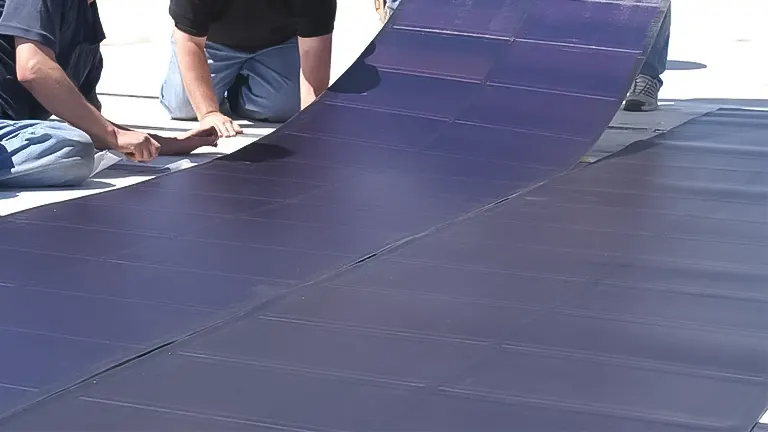
Comparing the Top Solar Generators
- Goal Zero Yeti 1500X: With an impressive 1516Wh battery capacity and 2000W inverter, the Goal Zero Yeti 1500X is a powerful choice for off-grid enthusiasts. Its compatibility with multiple solar panels and fast charging options make it a top pick. I found it to be perfect for running my essential appliances and electronics.
- Jackery Explorer 1000: The Jackery Explorer 1000 is a compact and portable solution with a 1002Wh battery and a 1000W inverter. I found it exceptionally convenient for camping trips, and it’s capable of powering my fridge and charging my laptop simultaneously.
Comparison Table and Competitive
| Feature | Anker SOLIX F2000 | Goal Zero Yeti 1500X | Jackery Explorer 1000 |
|---|---|---|---|
| Continuous Power Output (W) | 2000W | 2000W | 1000W |
| Surge Power Rating (W) | 2200W | 3500W | 2000W |
| Battery Capacity (Wh) | 1998Wh | 1516Wh | 1002Wh |
| Battery Chemistry | LiFePO4 | Lithium | Lithium |
| Portability | Wheels and handle | Wheels and handle | Integrated handle |
| Weight (lbs) | 103 lbs | 103 lbs | 22.04 lbs |
| Dimensions (inches) | 18.5 x 15.4 x 11.4 | 14.7 x 15.3 x 10.4 | 13.1 x 9.2 x 11.1 |
| Charging Options | Solar, AC, car, USB-C | Solar, AC, car, USB-C | Solar, AC, car, USB |
| Full Charge Time (Solar) | Varies depending on panels | 4-8 hours (with recommended panels) | 8 hours (with recommended panels) |
| AC Outlets | 4 | 2 | 3 |
| USB Ports | 3 USB-C, 4 USB-A | 2 USB-C, 2 USB-A | 2 USB-C, 2 USB-A |
| Smartphone App Control | Yes | Yes | Yes |
| Price | $1,999.00 USD | $1,999.95 USD | $699.00 USD |
Competitive Analysis
- Power Output: The Anker SOLIX F2000 and the Goal Zero Yeti 1500X both offer a robust 2000W continuous power output, making them suitable for running multiple devices simultaneously, while the Jackery Explorer 1000 provides 1000W.
- Battery Capacity: The Anker SOLIX F2000 boasts the highest battery capacity at 1998Wh, providing extended power supply. The Goal Zero Yeti 1500X offers 1516Wh, and the Jackery Explorer 1000 provides 1002Wh.
- Portability: The Anker SOLIX F2000 and the Goal Zero Yeti 1500X are similar in terms of weight and include wheels and handles for ease of transport, whereas the Jackery Explorer 1000 is considerably lighter and features an integrated handle, making it highly portable.
- Charging Options: All three models support solar, AC, car, and USB-C charging options, providing versatility in recharging.
- Full Charge Time (Solar): The Goal Zero Yeti 1500X offers the quickest solar charge time (4-8 hours with recommended panels), while the Jackery Explorer 1000 and Anker SOLIX F2000 have longer solar charging times.
- AC Outlets and USB Ports: The Anker SOLIX F2000 provides four AC outlets and a generous selection of USB ports, offering ample connectivity options. The Goal Zero Yeti 1500X features two AC outlets and a variety of USB ports, while the Jackery Explorer 1000 offers three AC outlets and USB ports.
- Smartphone App Control: All three models offer smartphone app control for monitoring and controlling the generator remotely.
- Price: Prices vary for all three models, and the choice will depend on your budget and specific needs.
To sum up, the choice between these portable solar generators depends on your power requirements, budget, and preferences for portability. The Anker SOLIX F2000 stands out with its impressive battery capacity and power output, making it suitable for extended off-grid living. The Goal Zero Yeti 1500X is another robust option with fast solar charging capabilities. The Jackery Explorer 1000 is a more lightweight and budget-friendly choice for those with moderate power needs. Consider your individual needs and the features that matter most to you when making your selection.
Pros and Cons
Pros
- Environmentally Friendly Power Source: One of the most significant advantages of a solar generator is its environmentally friendly nature. It harnesses the power of the sun, a clean and renewable energy source, without emitting harmful pollutants or greenhouse gases. This choice reduces your carbon footprint and contributes to a more sustainable future.
- No Noise or Pollution: Unlike traditional fuel-powered generators that can be noisy and release toxic fumes, solar generators operate silently and produce zero emissions. This means you can enjoy a peaceful and pollution-free environment, especially in remote off-grid locations.
- Consistent Energy in Remote Locations: Solar generators are designed to provide a reliable power source in even the most remote areas. As long as there’s sunlight, you have a consistent energy supply, allowing you to maintain a comfortable and functional living space off the grid.
- Reduces Long-Term Energy Costs: While the initial investment in a solar generator can be substantial, it pays off over time. Solar energy is essentially free, and once the system is set up, you’ll enjoy reduced energy costs as you generate your electricity. This cost savings can be significant, making it an economically viable choice for off-grid living.
- Low Maintenance and Operating Costs: Solar generators have minimal maintenance requirements, usually limited to occasional cleaning of solar panels. With no need for fuel, oil changes, or extensive maintenance, they are cost-effective and hassle-free in the long run.
Cons
- High Initial Investment: Acquiring a solar generator involves a significant upfront cost, which can deter some potential off-grid enthusiasts. However, it’s important to view this as an investment that will yield long-term savings and environmental benefits.
- Limited Power Supply on Cloudy Days: Solar generators are dependent on sunlight, making them less efficient during cloudy or overcast weather. This can lead to reduced power output and may require a backup power source or additional energy storage solutions for uninterrupted power during such periods.
- Sunlight Dependency: Solar generators require ample sunlight to operate efficiently. In areas with limited sunlight, such as high-latitude regions or during winter months, the power generation may be insufficient to meet daily energy needs.
- Heavy Reliance on Batteries and Inverters: Solar generators rely on batteries to store energy for use during non-sunlit hours. Additionally, inverters are needed to convert DC (direct current) solar energy into AC (alternating current) for household appliances. Heavy reliance on these components means potential points of failure, so regular maintenance and battery replacement are essential to ensure uninterrupted power supply.
Is Off-Grid Living Feasible with a Solar Generator?
Certainly! Solar generators present a highly viable solution for off-grid living. Their operation involves the conversion of sunlight into electrical power, subsequently stored in batteries for on-demand utilization. This process establishes a reliable and eco-friendly energy source that grants you full autonomy and control. Say farewell to concerns over utility blackouts or dwindling fuel resources. As long as the sun continues to shine, your power supply remains uninterrupted.
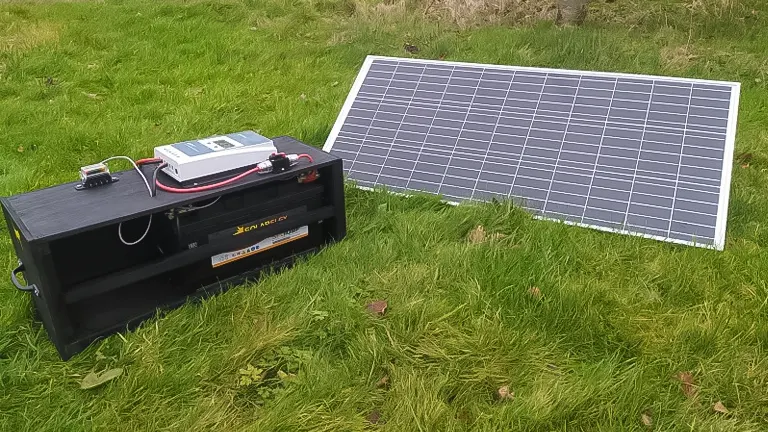
Nonetheless, the transition to off-grid living with a solar generator necessitates a well-thought-out approach. It’s imperative to accurately assess your power requirements, opt for an appropriately sized solar generator system, and adopt effective energy management practices to ensure that the generator consistently meets your energy needs. Once you have the system in place, it introduces a liberating and eco-conscious manner of living off the grid, in which you are the steward of your energy production and consumption.
Determining the Required Number of Solar Panels for Off-Grid House Power
The number of solar panels essential for running a house off-grid hinges on two primary factors: your daily power consumption and the quantity of sunlight your geographical location receives. Here’s a straightforward method to compute this:
- Calculate Daily Energy Consumption: Begin by quantifying your daily energy consumption in watt-hours (Wh). This involves adding up the wattage of all devices and appliances you intend to use and multiplying it by the number of hours each will be in operation.
- Consider Daily Sunlight Hours: Divide your daily energy consumption by the average daily sunlight hours in your area. This calculation reveals the quantity of solar power you need to generate every hour to meet your energy requirements.
- Determine Panel Quantity: Further divide the result by the wattage of a single solar panel. This step provides an estimate of the number of solar panels required to fulfill your energy needs.
For instance, if your household consumes approximately 5,000Wh per day, and you receive 5 hours of good sunlight daily, you would necessitate solar panels with a combined output of 1,000W (i.e., 5,000Wh ÷ 5h = 1,000W). In the scenario of using 200W panels, like those accompanying the Anker Solar Generator 767, you would require roughly 5 panels.

It’s important to note that this is a simplified estimation. For more precise results, it’s advisable to seek consultation from a solar professional or employ an online solar calculator that can consider additional variables impacting solar panel efficiency and your specific location’s solar exposure.
Conclusion
In conclusion, exploring the top solar generators for off-grid living reveals a realm of possibilities and challenges in pursuit of sustainable, self-sufficient energy solutions. These innovative systems offer a bridge to a lifestyle unshackled from traditional power sources, promising environmental consciousness, independence, and reliable energy provision. Assessing the right solar generator involves a meticulous consideration of factors such as power output, battery capacity, portability, charging options, and additional features. Each solar generator, whether it’s the robust Anker SOLIX F2000, the versatile Goal Zero Yeti 1500X, or the compact Jackery Explorer 1000, embodies unique strengths and caters to varied off-grid needs.
While these generators promise liberation from utility dependence, they also require strategic planning, considering factors like initial investment, sunlight dependence, and effective power management. Selecting the most suitable solar generator demands a balance between power requirements, location, and long-term sustainability goals. Ultimately, embracing an off-grid lifestyle powered by solar generators necessitates a blend of meticulous preparation, informed decision-making, and an understanding of the potentials and limitations these systems offer.
Frequently Asked Questions
- What is the primary advantage of using a solar generator for off-grid living?
Solar generator offer an eco-friendly and renewable power source, reducing your carbon footprint and providing independence from traditional utilities. - How do I determine the right solar generator size for my off-grid needs?
Calculate your daily energy consumption in watt-hours (Wh) and consider the average daily sunlight hours in your location. This will help you estimate the number of solar panels and battery capacity required. - What are the key factors to consider when choosing a solar generator for off-grid living?
Essential factors include power output, battery capacity, portability, charging options, and additional features such as AC outlets and USB ports. The choice should align with your specific energy requirements and lifestyle. - Are solar generators suitable for locations with limited sunlight?
While solar generators are highly efficient in sunny regions, they can still function in areas with less sunlight. It may require additional solar panels or battery capacity to compensate for reduced sun exposure. - What is the maintenance required for solar generators, and how do they perform during adverse weather conditions?
Solar generators have minimal maintenance needs, mainly involving periodic cleaning of solar panels. During cloudy or overcast days, the power output may decrease, and it’s advisable to have backup power options for uninterrupted energy supply during such periods.
We value your input! Please feel free to share your personal experiences and thoughts about the top solar generators for off-grid living featured in this guide. Your insights and feedback can greatly assist others in making well-informed decisions on their journey towards sustainable and independent living!

Edward Smith
Forestry AuthorWoodworking is about more than crafting; it's a harmonious connection with nature, mastering tools, and preserving our environment. I'm here to share my knowledge and experiences with you, forging a future where we can embrace wood's beauty and utility while safeguarding our forests' health and diversity.

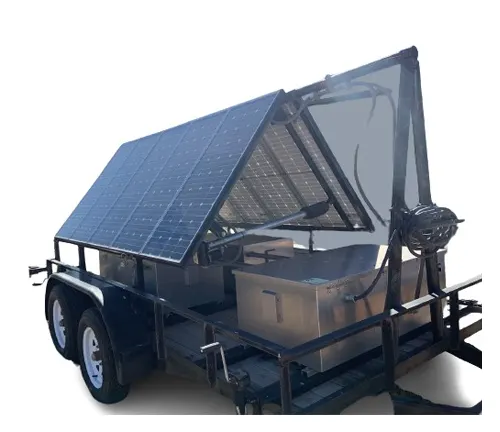

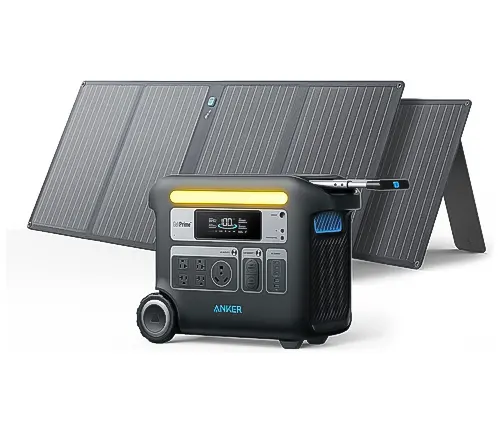
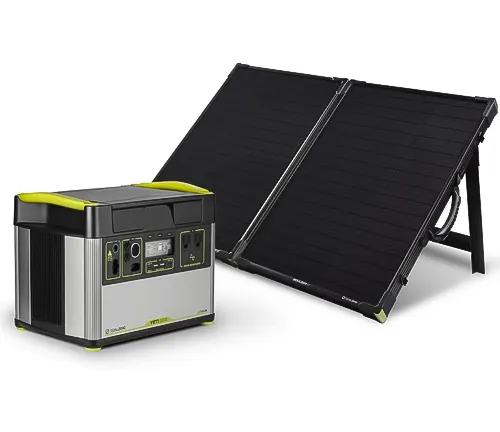
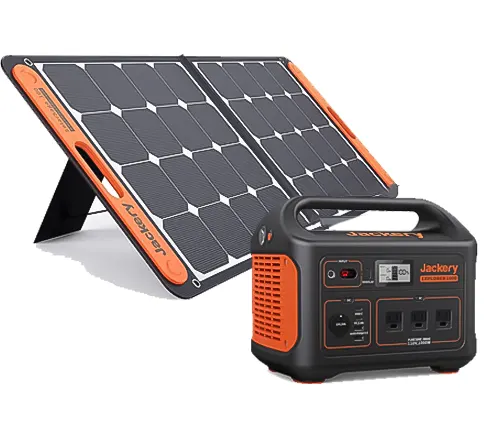












Leave your comment